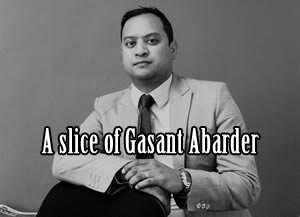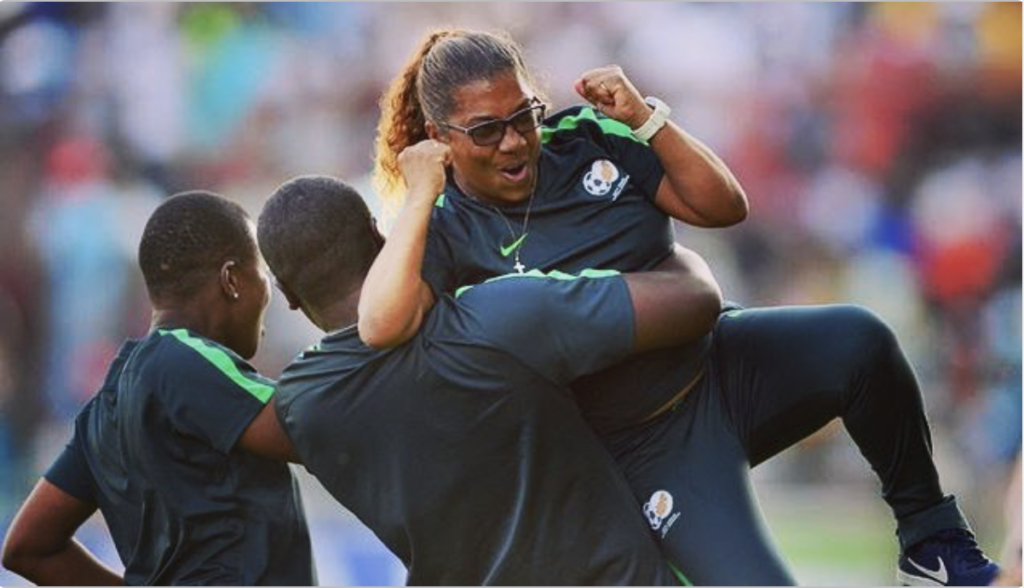We’ve always leaned on sport to uplift us as a nation. But as we headed into our Heritage Day long weekend, there was little to make us buoyant — apart from the bunch of winners that are Banyana Banyana and for whom the future looks bright, writes Gasant Abarder in a new #SliceofGasant.
Abarder, who recently launched his book, Hack with a Grenade, is among the country’s most influential media voices. Catch his weekly column here, exclusive to Cape {town} Etc.

In all of this despair there was a massive dose of hope and happiness. Blink and you would have missed it. It was located on the outer reaches of pay TV. The less-travelled SuperSport Channel 209 to be exact.
What could have been a moment to savour wasn’t even trending on Twitter. And yet it piqued the attention first of my four-year-old daughter and then my eight-year-old daughter who came to watch this curiosity with me on the telly.
“They’re all girls, right dad?” the older sister asked.
“Yes, all of them,” I said.
The little one then followed up a few minutes later to confirm to her mom: “Mom, they’re all girls.”
What my two daughters were witnessing was Banyana Banyana triumphing in the Aisha Buhari Cup final in front of Nigerian fans in Lagos as South Africa beat the home team favourites 4-2.
?? ?? ??
Congratulations to @Banyana_Banyana who are crowned 2021 Aisha Buhari Cup Champions ?#WeAreUnited #BanyanaBanyana pic.twitter.com/MJrycQoV85
— Maritzburg United FC (@MaritzburgUtd) September 21, 2021
Our side beat footballing giants Ghana along the way, too. They were unlike any other South African soccer team we had watched before — and the Abarder household consumes more than your average number of football matches a week.
This side commanded the pitch in an exhibition-style display rarely seen in these parts. And despite the two goals conceded, Coach Desiree Ellis’s side could have scored more as they pinned Nigeria into their half with wave after wave of attack, attack, attack.
View this post on Instagram
Coincidentally, I was wearing my ‘Vannie Soutrivier; t-shirt that day last week. I hadn’t planned it this way because I too had forgotten about the final. Why Vannie Soutrivier? Because it was the suburb — better known to the Biscuit Mill set as Salt River — where Desiree and I grew up.
She is a few years my senior. But we both played football in those streets and went to the same schools, namely Dryden Street Primary School and Salt River High School. In fact, it was her brother Baasier Ellis, my sister’s classmate, who persuaded a 10-year-old me to become a Manchester United fan in 1988 as he regaled me with stories about Desiree’s exploits as a player in Europe.
She would become one of South Africa’s most capped players, recognised by the Laureus Sports Foundation and Fifa as a key figure in elevating women’s soccer in Africa and she would lead Banyana to their debut at the Women’s World Cup as manager.
But on Twitter it was deadly quiet.
The names ‘Banyana Banyana’, ‘Desiree Ellis’ or ace player ‘Thembi Kgatlana’ weren’t trending the way men’s soccer does after a big win. There was no hype on my WhatsApp the way there is in my various chats – even when the Bokke lose. There was none of the unfortunate remarks you see in response to yet another Proteas failure.
For once, save for the memory of Afcon 1996, a soccer team in SA colours was doing us all proud.
Still there is more to come from this incredible side. Said Ellis during the post-match interview: “We are very happy with the results but the performance still leaves room for improvement… This is a victory for all the clubs, all the coaches, for all the people involved in women’s football in South Africa.”
Women’s football in South Africa — much like women’s cricket — is doing the things. Most of the players ply their trade in the United States or Europe as they complete degrees at some of the finest universities. Others like Kgatlana and Refiloe Jane are playing for Atletico Madrid and AC Milan respectively in the Champions League.
View this post on Instagram
If we let them, they can inspire an entire generation of girl children to not only become footballers but whatever they want to be.
So, remember the names Ellis, Kgatlana, Jane, Kaylin Swart, Lebohang Ramalepe, Janine van Wyk, Tiisetso Makhubela, Bambanani Mbane, Linda Motlhalo, Gabriela Solgado, Melinda Kgadiete, Hildah Magaia, Regirl Ngobeni, Koketso Tlailane, Ongeziwe Ndlangise, Mamello Makhabane, Robyn Moodaly, Noxolo Cesane and Sibulele Holweni.
These names should be etched in South African sporting folklore as much as Kolisi, Rabada, Rabede, Stransky, Kolbe, Pollock, Bartlett, McCarthy or Moshoeu. What’s more, Banyana is among the most representative sides in this country.
View this post on Instagram
Save the match and show it to your children. It will make them shoot the lights out.
Also read:
Is there a racial bias in how South African police responds to protests?
Picture: Instagram






